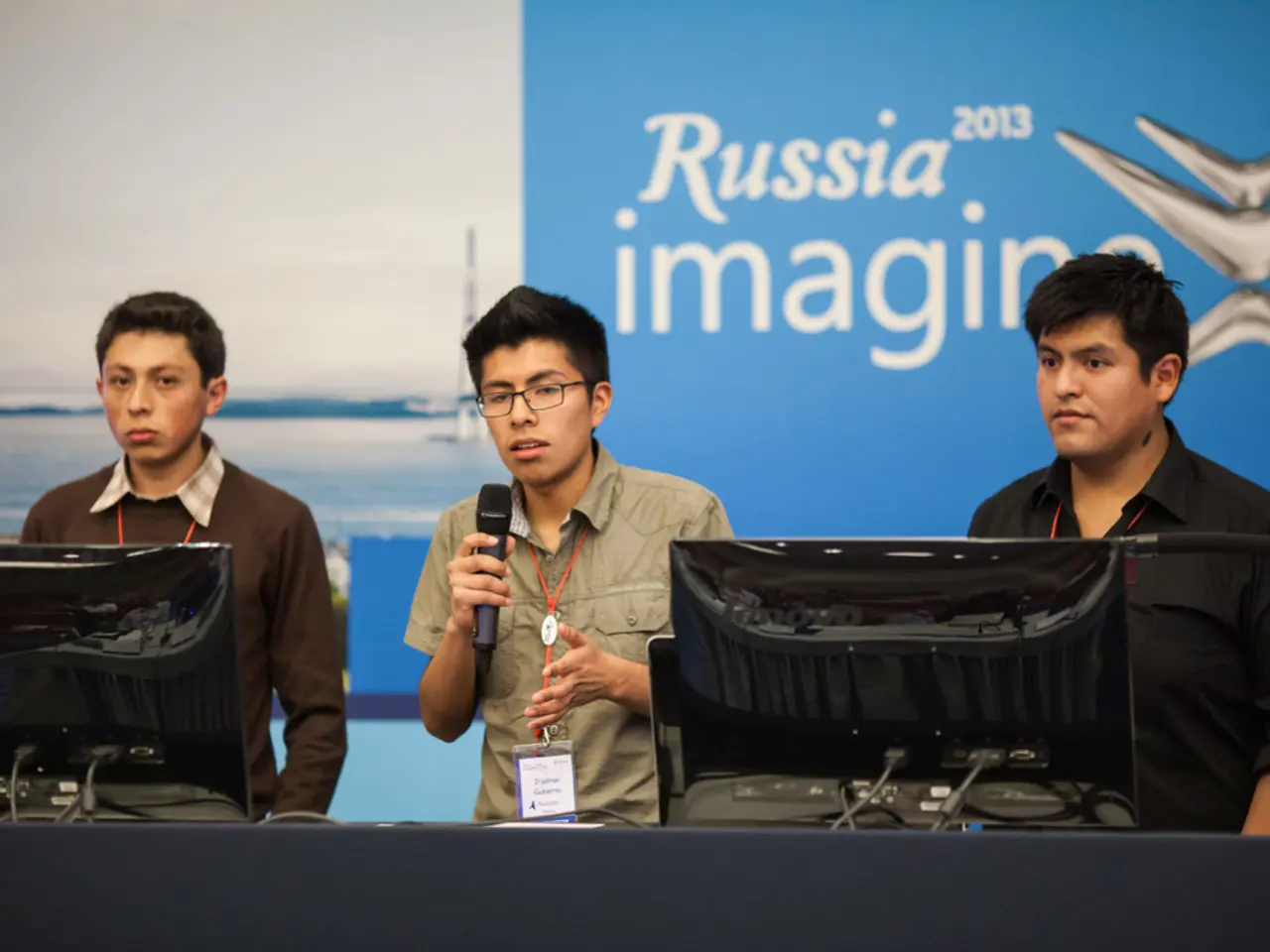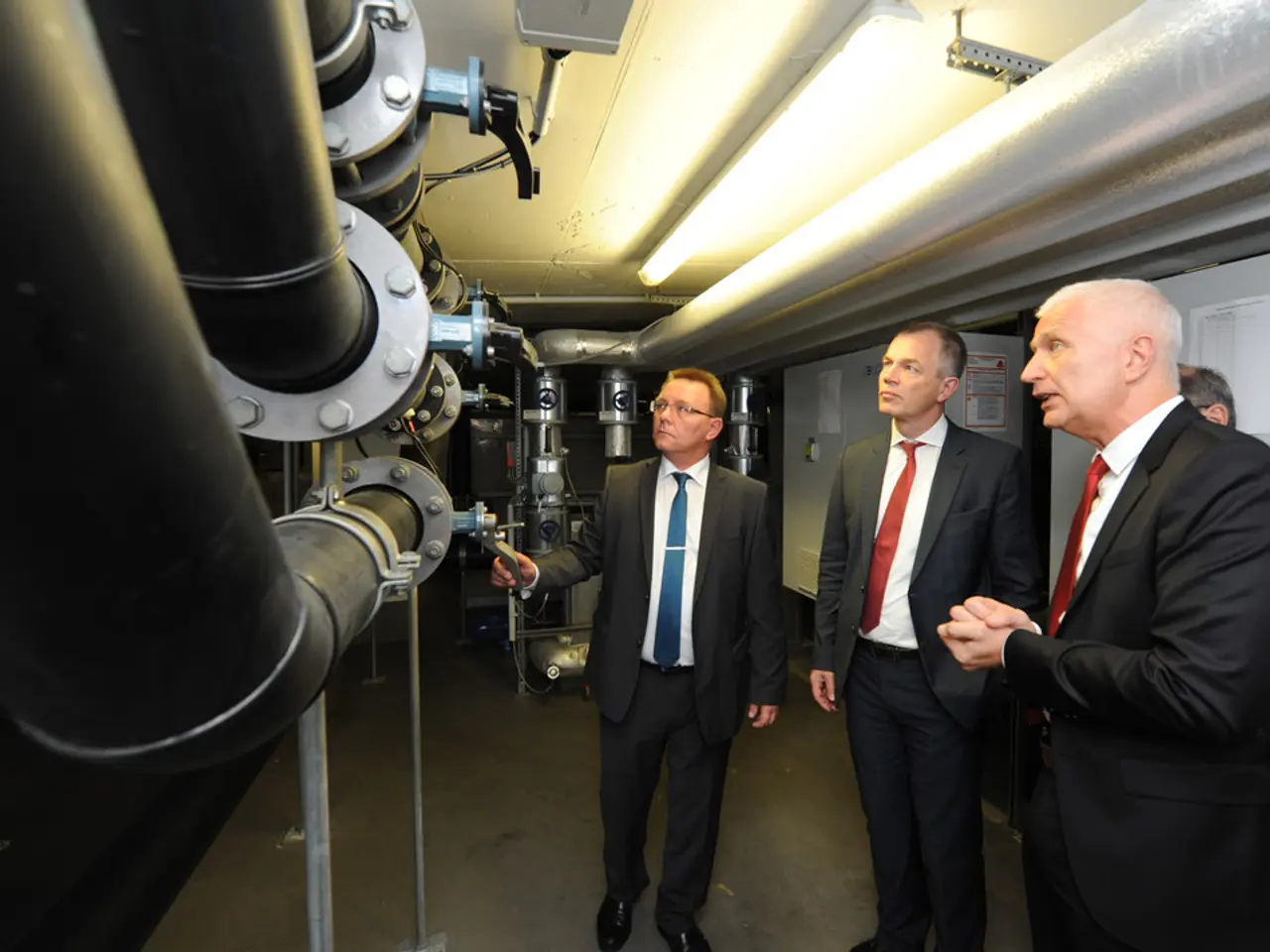AI CEO Sam Altman Intends to Develop a Novel Computing System, Claiming its Capabilities will Elevate AI to Remarkably Superior Levels
In a groundbreaking move, OpenAI, the leading artificial intelligence (AI) research and deployment company, has announced plans to revolutionise its AI hardware infrastructure. The vision, outlined by CEO Sam Altman and COO Brad Lightcap, aims to create a scalable, cost-effective, and high-performance AI hardware ecosystem.
The heart of this strategy involves collaborating with Broadcom since 2024 to design a custom AI chip. This chip, scheduled for mass production in 2026 using TSMC's advanced 3 nm process technology, will be capable of both training and inference. The goal is to create a dedicated AI hardware solution tailored to OpenAI's needs, improving performance and cost-efficiency compared to relying solely on third-party GPUs, particularly Nvidia’s, which face high demand and cost pressures.
This new hardware strategy aligns with OpenAI’s broader goal of advancing "safe and beneficial" artificial general intelligence (AGI) by tightly integrating hardware and software innovations. The upcoming GPT-5 model may unify existing model families, suggesting a streamlined approach enabled by this new hardware platform.
Complementing the chip development, OpenAI has secured a significant $11.9 billion deal with CoreWeave, an AI-specialized cloud provider with a large Nvidia GPU infrastructure. This partnership ensures access to massive computational resources for training and deployment while their own chip comes online.
The strategic vision reflects OpenAI’s commitment to long-term AI leadership through hardware-software co-design, enabling them to scale their models efficiently and maintain an edge in AI innovation as the compute demands grow exponentially.
While AMD has unveiled a broad vision for an open AI ecosystem with new accelerators and rack-scale infrastructures, OpenAI’s vision appears focused on internal custom chip development complemented by strategic partnerships for cloud AI capacity, aligning with its goal of building scalable, cost-effective, and high-performance AI hardware to power next-generation AI systems.
Sam Altman, a prominent figure in the artificial intelligence industry, co-founded OpenAI in 2015 with other technologists, including Elon Musk. Under his leadership, OpenAI has introduced breakthrough products such as GPT-3, DALL-E, and ChatGPT. His authority in the field is well-established, with comparisons to other tech visionaries and testimonies before governments on the societal implications of AI.
Altman's pursuit of a "transcendentally good" AI experience signals a new chapter for both the company and the technology sector at large. His vision is informed by OpenAI's mission to develop artificial general intelligence that benefits humanity, and his statement reflects his belief in the power of technological surprise and innovation.
The achievements of OpenAI have sparked global conversations about the future of human-computer interaction. As consumers increasingly seek more intuitive, helpful, and context-aware technology, OpenAI's new hardware initiative is poised to push the boundaries of what AI can achieve and has rapidly gained millions of users worldwide.
This news comes at a time when the market is saturated with incremental updates to existing devices. With OpenAI's focus on developing AI that can provide transcendentally good responses in various situations, it is clear that the company is aiming to offer a fundamentally new kind of computer experience.
References: [1] VentureBeat. (2022, March 23). OpenAI and Broadcom team up to design custom AI chip. Retrieved from https://venturebeat.com/2022/03/23/openai-and-broadcom-team-up-to-design-custom-ai-chip/
[2] The Verge. (2022, March 23). OpenAI’s new AI chip will be designed by Broadcom, and it’s coming in 2026. Retrieved from https://www.theverge.com/2022/3/23/23000744/openai-broadcom-ai-chip-tsmc-3nm-gpt-5-model
[3] TechCrunch. (2022, March 23). OpenAI and Broadcom partner to develop custom AI chip for large-scale machine learning. Retrieved from https://techcrunch.com/2022/03/23/openai-and-broadcom-partner-to-develop-custom-ai-chip-for-large-scale-machine-learning/
In line with their vision for technological advancement, OpenAI plans to collaborate with Broadcom to develop a custom AI chip for both training and inference, scheduled for mass production in 2026. This new hardware solution aims to improve performance and cost-efficiency compared to relying on third-party GPUs, such as Nvidia's.
The ongoing strategy also involves integrating artificial intelligence more deeply into their operations, as OpenAI seeks to push the boundaries of AI by combining hardware and software innovations, particularly with the upcoming GPT-5 model.




